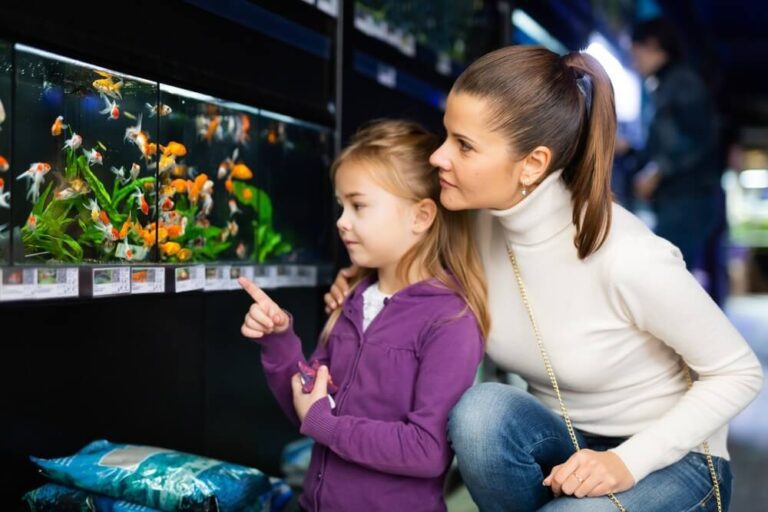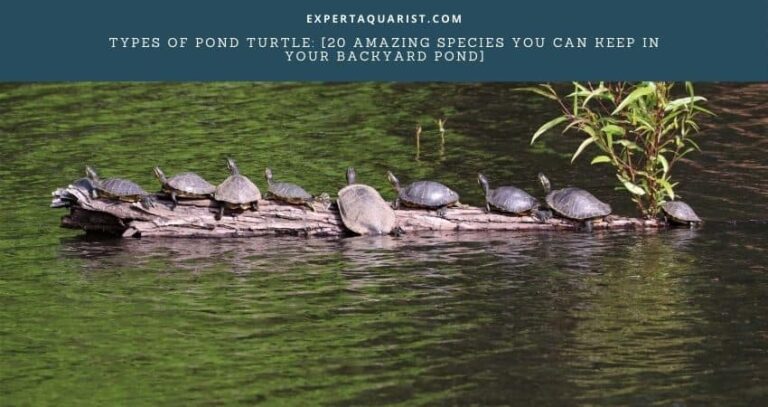An aquarium filter is an indispensable part of the fish tank. Its main function is removing debris and impurities in the water, supporting the lives of all fish species. Luckily, hardy fish that don’t need a filter to exist can survive in varied tank conditions. Along with hardy fish, small, solitary and coldwater fish are some of the easiest fish to take care of.
Without a fish filter inside a fish tank, ammonia and nitrates in the tank water can build up and suffocate most aquarium fish. Fish waste, respiration, and food debris are contaminants that risk the fish’s lives. So, for many fish growers, a filter and air pump are necessary investments.
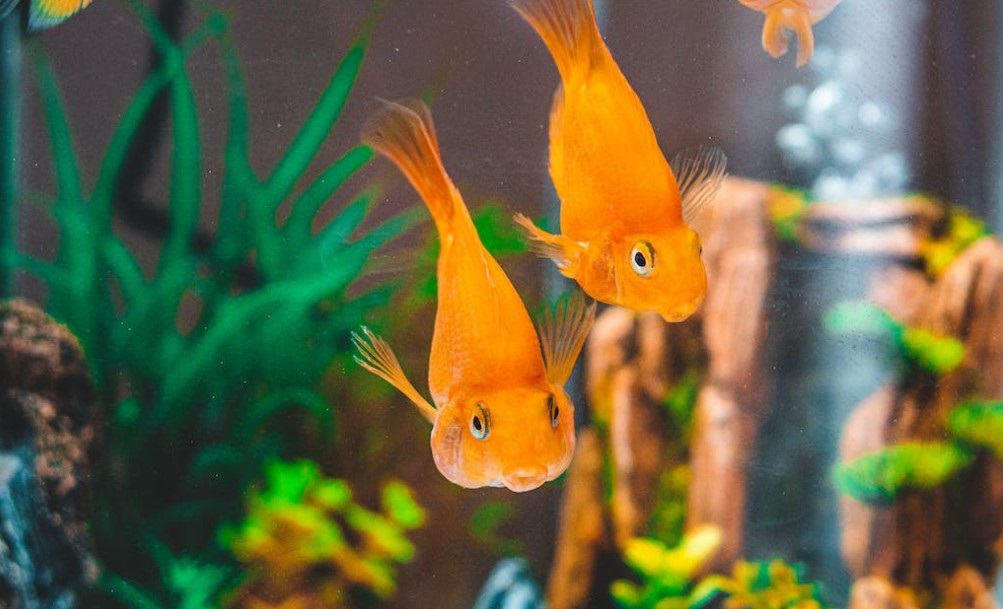
But if you forgo setting up a filter, you should commit to regular cleaning and maintenance to sustain your pet fishes. Frequent tank cleaning is time-consuming and traumatic to your beautiful fish. Getting them out of the dirty water and replacing them with clean ones can distress them. Some aquarists may use safe chemical filtrations like Clear FX Pro.
Top 10 Fish That Don’t Need Filter
Aside from a goldfish, do you want to know about low-maintenance fish you can keep? Here are 10 of the best fish that don’t need a filter.
Betta (Betta Splendens)

Betta fish, or the famous Siamese fighting fish, is a popular fish species used globally as a pet. They can grow no more than three inches long, perfect for small tanks. They are also aesthetically beautiful, with vibrant colors, flowing fins, and tails.
The Siamese fighting fish is a facultative breather. It means they only breathe air if needed, as they mostly rely on their gills for oxygen.
Betta fish are friendly, except for the males, who would fight each other when kept in the same betta tank. Male bettas hate tank mates of similar gender, so they are better off separated. They feed mostly on planktons, mosquitos, and other insect larvae but are biologically born carnivores. You cannot keep a betta fish in a small tank with smaller fish if the tank is anything less than 10 gallons.
- Size: 2.4 to 3 inches
- Lifespan: 3 to 5 years
- pH level: 6.5 to 7.5
- Environment: Freshwater, low-oxygen stream
- Temperature: 76 to 81⁰F
- Food: Protein-filled meaty dried or live food
Guppy (Poecilia reticulata)

Guppies are grown worldwide for their resilient nature. They can adapt to a variety of habitats and different salinity ranges. Although they are mostly viewed as feeder fish, guppies are also attractive pets to keep.
In good quality water, guppies can survive even without a filter. They produce less waste, maybe a few excretions, but it does not necessarily pollute the water. Filthy water that surrounds the guppy may come mostly from food debris.
The key to successfully raising a guppy without a filter is proper handling. For instance, as long as they are not overstocked with tank mates and you have a large aquarium, they will survive just fine. That is approximately two gallons of water for every fish.
You can also grow plants in the aquarium as a natural filter. Once the water gets filthy, clean it by removing leftover foods and changing the water.
- Size: 0.6 to 2.4 inches
- Lifespan: 2 years
- pH level: 7.0 to 8.0
- Environment: Brackish freshwater
- Temperature: 72 to 82⁰F
- Food: Omnivore; high-quality fish flakes, peas, or meaty food
White Cloud Mountain Minnow (Tanichthys albonubes)
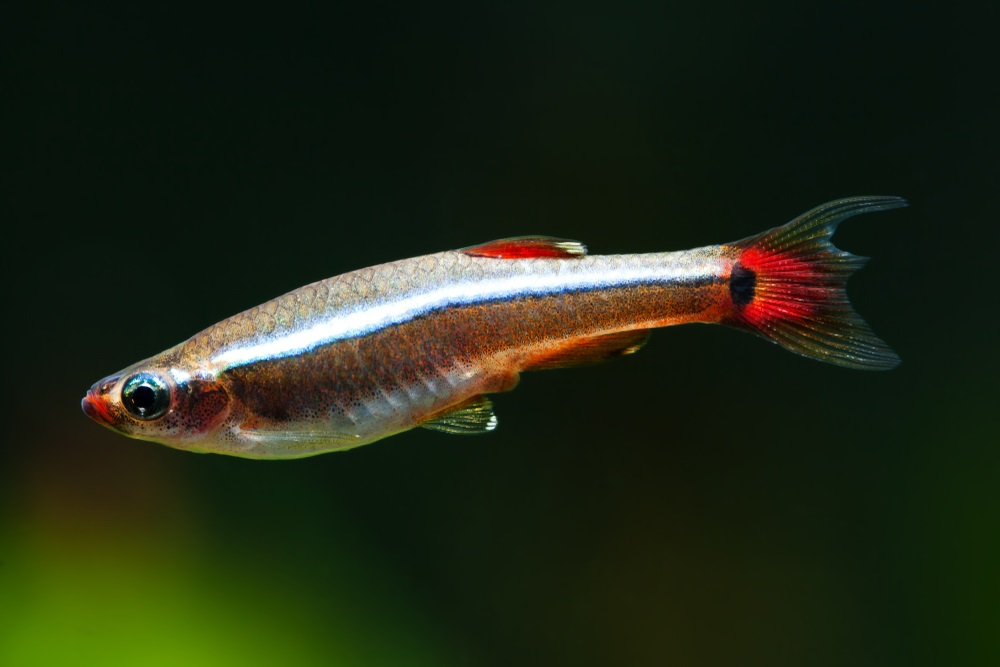
White cloud mountain minnows are peaceful and sociable fishes that can thrive well with other tank mates. These fishes are tiny but are adorable with their metallic iridescent appearance. A minnow is often mistaken for a neon tetra because of its colors, but they are cheaper than the latter.
White cloud minnows are versatile and robust. They can survive even in a small fish tank. The minimum aquarium size for a minnow of a group of five is 60 cm. These are the best for fish beginners because they are easy to breed and low maintenance.
Water quality does not bother the mountain minnows. However, they are slightly sensitive to temperature and cannot tolerate heat well. Water temperature above 72⁰F (22⁰C) can affect and may shorten the lifespan of this fish species.
- Size: 1.5 inches
- Lifespan: 5 to 7 years
- pH level: 6.0 to 8.0
- Environment: Freshwater
- Temperature: 64 to 72⁰F
- Food: Micropredators like worms and larvae; dried pellets
Dwarf Gourami (Trichogaster lalius)

Gourami is a diverse fish species with different available strains requiring different breeding requirements. They are a good choice for a community aquarium if you pair them with non-aggressive tank mates. Gourami is naturally friendly, although a little territorial.
Among its many strains, the dwarf gourami is the hardiest fish that doesn’t need a filter. This type is a facultative breather and benefits most in tanks with plenty of vegetation.
Dwarf gourami is the smallest of all gouramies and is widely distributed in its native range. They are not picky and will feed on various fresh and live feeds. However, the male parent who guards the eggs will likely eat the developing larvae sooner. Breeders know better when to transfer the male dwarf gourami to prevent them from eating their fry.
- Size: 3.7 inches
- Lifespan: 4 to 6 years
- pH level: 6.0 to 8.0
- Environment: Freshwater
- Temperature: 77 to 82⁰F
- Food: Zooplanktons; insect; veggie flakes
Pygmy Corydoras (Corydoras pygmaeus)

Pygmy cory, or pygmy catfish, is one of the smallest fishes that are best for fishbowls and small tanks. These well-behaved fishes are resilient and non-territorial, not contributing to overcrowding problems.
They may not be as colorful as other fishes, but the cuteness of the pygmy cory is also appealing. They are friendly but quite introverted. Pygmy cory catfish spends most of its time in the lower level, hiding or looking for food. Occasionally, they may rise to the surface for a gulp of air. This is especially true if the water quality is poor.
As bottom-dwelling species, the Corydoras can clean up the sinking food residues. However, to keep them alive, you should feed cory directly instead of them thriving on leftovers.
- Size: 1.2 to 2.5 inches
- Lifespan: 3 years
- pH level: 6.0 to 8.0
- Environment: Freshwater
- Temperature: 72 to 79⁰F
- Food: Meat; plants; shrimp pellets; bottom-feeding tablets
Zebra Danios (Danio rerio)

Zebra danios are easily recognizable by their zebra stripes of horizontal black and white. These types of fish are also ideal for beginners and hobbyists because of their resilience. Zebra danios can withstand different temperatures and water conditions. They can survive without a filter and heater, even if the temperature falls to 60⁰F.
Danios are friendly and sociable fish that thrive in schools and are not meant for solitary living. They are surface dwellers and stay in the upper tank most of the time. They are prolific breeders but are so loyal to their mates that they may not spawn anymore if the other mate dies.
A healthy zebra danio will survive in tanks even without a filter. They are not delicate fishes to keep, but they will do better in large tanks. If you decide to set up a filter, they are not demanding on the types of filter you may use.
- Size: 2 inches
- Lifespan: About 5 years
- pH level: 6.5 to 7.0
- Environment: Freshwater
- Temperature: 64 to 74⁰F
- Food: Omnivores; live and fresh invertebrates; veggies
Ember Tetra (Hyphessobrycon amandae)
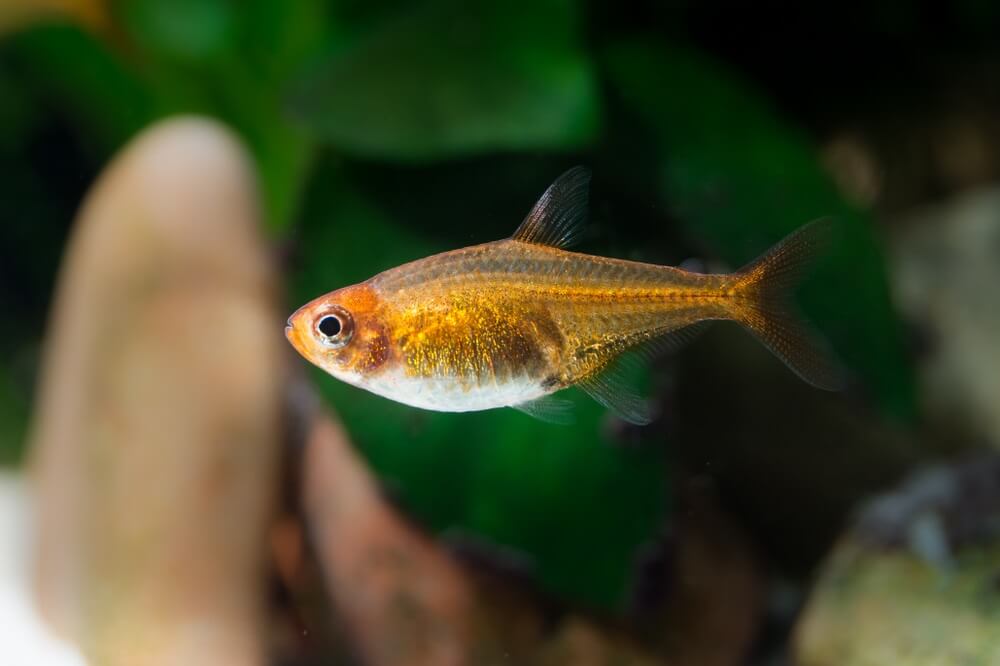
Hobbyists looking for visually appealing but easy-to-care fishes will love the ember tetra. It has an orangey-red vibrant gradient, adding a pop of color to the tank.
In its native habitat, ember tetra prefers living in slow water with heavy vegetation. Keeping them in your tank has no downsides as they are hardy and easy to maintain. They are not sensitive to water quality and do not need a filter.
The secret to a prolifically thriving ember tetra is adding plants in their tanks. Vegetations keep their stress level low and also maintain water quality. A small group of tetras will do well in a 10-gallon tank. If you intend to keep a larger school of fish, you can up the tank size to at least 20 gallons.
- Size: 1 inch
- Lifespan: 2 to 4 years
- pH level: 5.0 to 7.0
- Environment: Freshwater
- Temperature: 73 to 84⁰F
- Food: Fresh live or dried foods; brine shrimp
Malabar Dwarf Puffer Fish (Carinotetraodon travancoricus)
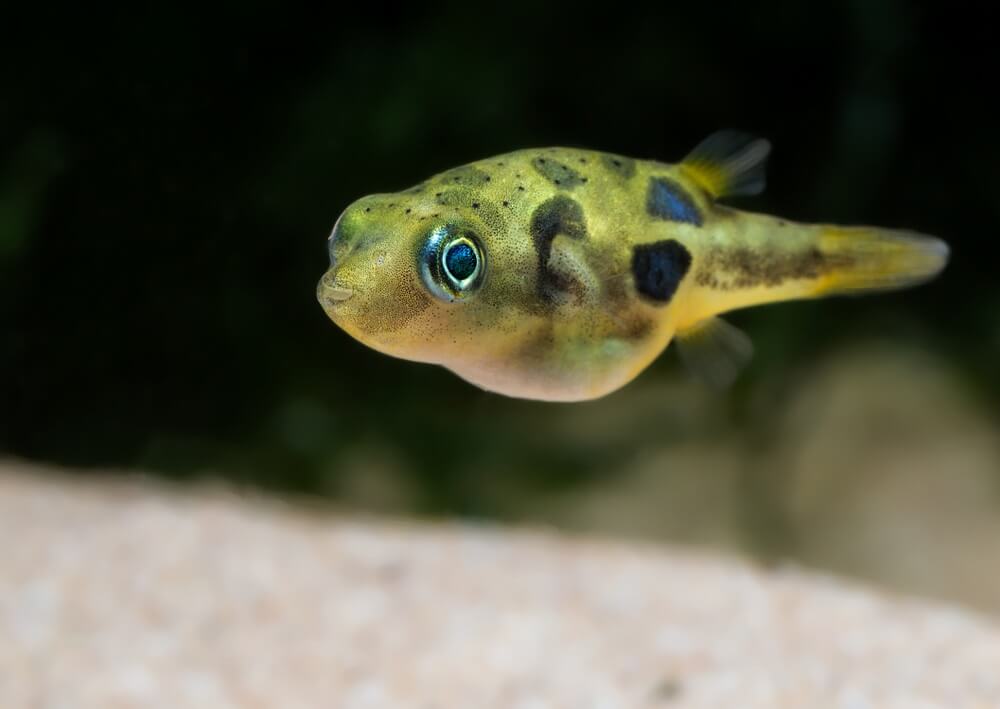
Malabar dwarf, or pea pufferfish, is another facultative breather ideal for tanks without filters. This pygmy puffer is the smallest freshwater fish of its kind. It is active but shy and seems to be aware of the environment outside the aquarium.
Dwarf puffer fish are intelligent too. Although small, they can get as aggressive as the larger species. Thus, you cannot put the dwarf puffer with slow swimming long finned-fishes they tend to prey on.
Pufferfish get their names from their ability to puff air or water whenever threatened. But unlike the marine pufferfish, the dwarf puffer fish can tolerate unfiltered water. It requires only about 5 gallons of water to grow into its max length of 1.4 inches.
- Size: 1.4 inch
- Lifespan: 4 years
- pH level: 6.5 to 8.5
- Environment: Freshwater
- Temperature: 74 to 82⁰F
- Food: Carnivore; live insect; larvae; brine shrimp
Endler Guppy (Poecilia wingei)

Endler guppy is also known as Endler’s Livebearer due to its ability to birth live fish instead of eggs. These species produce less waste and can go without a filter as long as they are surrounded by thick flora.
Endler livebearer is a close relative of the guppy and is similarly easy to care for. Male Endlers are vibrant, while females sport a tannish-silver hue. They were named after Professor John Endler, who rediscovered them almost in extinction in Venezuela and brought them to the aquarium trade. Subsequent inbreeding produces many specialty colors; however, some Endler guppy species have a relatively low lifespan.
Generally, the Endler guppies can live for up to two years. They are not picky eaters and often prefer warm water temperatures. They are best for small tanks of about 5 gallons, but they may get overcrowded since they are prolific breeders.
- Size: Male, 1 inch; Female, 2 inches
- Lifespan: 2 to 3 years
- pH level: 6.7 to 8.5
- Environment: Freshwater
- Temperature: 74 – 82⁰F
- Food: Variety of food; are scavengers and risks obesity from overfeeding
Paradise Fish (Macropodus opercularis)

Paradise fish is a type of gourami introduced into the tropical and subtropical environment. They are popular among aquarists and are widely transported worldwide, even with their aggressive nature.
They are still preferred because of their splash of colors and vibrant appearance. Paradise fishes often have vivid blue and red stripes on their body with orange fins that intensify during mating season.
A hobbyist who wants to add a dash of colors to their aquarium often includes paradise fish. However, they are dominant fish and are incompatible tank mates with smaller species. Keep them with large, peaceful fish, and they will live just fine.
- Size: 2 to 3 inches
- Lifespan: 8 to 10 years
- pH level: 6.0 to 8.0
- Environment: Brackish freshwater
- Temperature: 70 to 82⁰F
- Food: Omnivores; different high-protein foods
How to Choose Fish That Don’t Need a Filter
Fish that don’t need a filter are hardy and less sensitive. They have many advantages that make them more preferred among newbie pet keepers. For one, they only need a small tank or fish bowl, making it easier to change the water. The tank size depends on the particular species since other fishes will only flourish in a group rather than solitary.
When choosing the best fish for your fishbowl, consider the following guidelines:
- Choose small freshwater fish
- Solitary fishes are better
- Coldwater fish are hardier in withstanding water changes
- Pick the resilient species that can survive fluctuating water conditions
- Choose fishes that produce less fecal waste
- No overcrowding fish in a tank
Expert fish growers understand the importance of having fish filtration in keeping fish happy, healthy, and well. If you decide to forego a filter, it is important to provide a conducive environment for them.
You can arrange a comfortable environment for your fish by providing heat, light, and the right aquarium plants. You should also ensure water quality by routine testing and water changes when necessary to keep the beneficial bacteria. A pet fish will sustain itself if the planted tank is uncrowded and well-maintained.

